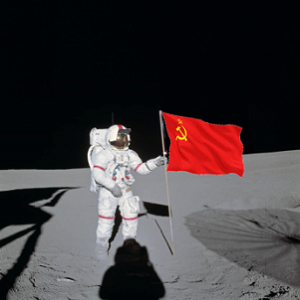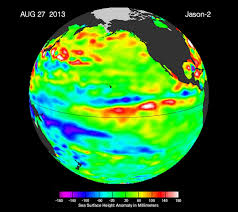[Editor’s Note: “As a phoenix from the ashes,” Mad Scientist Laboratory is pleased to bring back The Queue – a periodic post recounting the most compelling articles, books, podcasts, videos, and/or movies that members of the U.S. Army’s Mad Scientist Initiative have recently reviewed. In this anthology, we address how each of these works either informs or challenges our understanding of the Operational Environment (OE) and describe the associated implications of each for the U.S. Army. We hope that you will add The Queue to your essential reading, listening, or watching — Enjoy! (Please review this post via a non-DoD network in order to access all of the embedded links — Thank you!)]
1. “Blinded by the Golden Calf”
Fighting for the Soul of Western Militaries, The Western Way of War podcast, The Royal United Services Institute (RUSI), 4 March 2021.
Maneuver warfare has been placed on an altar and venerated as the idol of orthodox warfighting doctrine for much of the last hundred years. Indeed, the U.S. Army’s current operating concept, TP 525-3-1, The U.S. Army in Multi-Domain Operations 2028 states that the central idea of Multi-Domain Operations is “to prevail in competition; when necessary, Army forces penetrate and dis-integrate enemy anti-access and area denial systems and exploit the resultant freedom of maneuver to achieve strategic objectives (win) and force a return to competition on favorable terms.” This naively presupposes, however, that our adversaries will obligingly engage us in the fight at which we excel, and blithely ignores the fact that warfare continues to evolve and our adversaries have observed us closely now for several decades — learning, adapting, and above all else, mastering how to avoid “the decisive blow!”
 In the Fighting for the Soul of Western Militaries episode of The Royal United Services Institute’s The Western Way of War podcast, host Peter Roberts, Director of Military Sciences, and MAJ Amos C. Fox, U.S. Army, engage in a refreshingly iconoclastic discussion on the mantle that maneuver has assumed in western military theory. Challenging current orthodoxy, MAJ Fox addresses the bifurcation of modern warfare, describing how we talk about it – the narrative – as being antithetical to how we actually apply it.
In the Fighting for the Soul of Western Militaries episode of The Royal United Services Institute’s The Western Way of War podcast, host Peter Roberts, Director of Military Sciences, and MAJ Amos C. Fox, U.S. Army, engage in a refreshingly iconoclastic discussion on the mantle that maneuver has assumed in western military theory. Challenging current orthodoxy, MAJ Fox addresses the bifurcation of modern warfare, describing how we talk about it – the narrative – as being antithetical to how we actually apply it.
“… the narrative aspect of the Western way of war… [is] being guided by interpretations of Napoleonic Warfare to describe how to operate on a 21st Century battlefield…. I like to think of the way the current narrative works as using the mechanics of a wind-up wrist watch to explain how an Apple watch works.”
Current doctrine describes an aspirational Large Scale Combat Operations fight – one that we can dominate and win — but that’s not what we are seeing currently manifested in combat around the globe. Instead, it is big states fighting non-state actors or the proxies of other states, with the weaker power trying to offset the big state’s military advantage, often via urban fights that negate this advantage. These are fundamentally positional and attrition-based conflicts, dominated by realist techniques (as seen in Mosul, Raqqa, Aleppo, Ukraine, and Marawi, to name just a few), with the concept of maneuver going out the window when the grinding reality of combat sets in.
That is not to say there isn’t a place for maneuver, but warfare is conditions-based. We need to relearn – and practice – surging between maneuver,  attrition, and positional warfare, and know when to oscillate between the three, based on conditions, situation, and terrain.
attrition, and positional warfare, and know when to oscillate between the three, based on conditions, situation, and terrain.
“Grant’s Vicksburg campaign is a perfect illustration of this fight, utilizing all three…. Maneuver is [only] one tool in the kitbag of warfighting.”
Crank up “Golden Calf,” by The Band of Heathens
2. “Dark Side of the Moon”
For All Mankind (Seasons 1 & 2), created and written by Ronald D. Moore, Apple+, 1 November 2019 to 23 April 2021.
Life in the U.S. would be different if we hadn’t lost the Space Race to the Soviets in 1969. Then again, we wouldn’t have the Jamestown outpost, our permanent presence on the Moon. And we, as a Nation, wouldn’t have learned the skills and developed the tools necessary for surviving international competition. But you can’t change the past…
 That’s the foundation for the on-going television series For All Mankind, currently in its second season on Apple TV+. The series, developed by veteran science fiction creator and showrunner Ronald D. Moore (Star Trek: The Next Generation, Battlestar Galactica), looks at an alternate history where the Space Race is not only won by the Soviets, but continues and escalates. As the story unfolds, the audience witnesses a series of actions and reactions that lead to the first women on the moon, the establishment of permanent outposts by both the U.S. and the Soviets, and further exploration of and competition for the Moon’s natural resources. By framing the story as an alternate history, a form of science fiction, the writers are free to explore events and consequences that never happened but could provide insight into today’s issues. For instance, The United States is currently in competition with both Russia and China in areas below the threshold of warfare (Information Operations, economics, recruitment and talent management). For All Mankind shows us what could potentially happen if we lose to our competitors and the unintended consequences therein. It also highlights the need to stay vigilant. In our timeline (i.e., actual history), the Space Race (as one theater of the overall Cold War) effectively bankrupted the Soviet Union, but we can’t expect that to be the case in all facets of competition. We also can’t think about competition as a discrete entity. There is no “win” when it comes to competition. Competition is on-going and windows of advantage are fleeting. Just as the U.S. didn’t give up in For All Mankind, our strategic competitors aren’t going to give up either.
That’s the foundation for the on-going television series For All Mankind, currently in its second season on Apple TV+. The series, developed by veteran science fiction creator and showrunner Ronald D. Moore (Star Trek: The Next Generation, Battlestar Galactica), looks at an alternate history where the Space Race is not only won by the Soviets, but continues and escalates. As the story unfolds, the audience witnesses a series of actions and reactions that lead to the first women on the moon, the establishment of permanent outposts by both the U.S. and the Soviets, and further exploration of and competition for the Moon’s natural resources. By framing the story as an alternate history, a form of science fiction, the writers are free to explore events and consequences that never happened but could provide insight into today’s issues. For instance, The United States is currently in competition with both Russia and China in areas below the threshold of warfare (Information Operations, economics, recruitment and talent management). For All Mankind shows us what could potentially happen if we lose to our competitors and the unintended consequences therein. It also highlights the need to stay vigilant. In our timeline (i.e., actual history), the Space Race (as one theater of the overall Cold War) effectively bankrupted the Soviet Union, but we can’t expect that to be the case in all facets of competition. We also can’t think about competition as a discrete entity. There is no “win” when it comes to competition. Competition is on-going and windows of advantage are fleeting. Just as the U.S. didn’t give up in For All Mankind, our strategic competitors aren’t going to give up either.
Science fiction makes this type of thought experiment possible. Visualizing a world where a significant event in U.S. history is reversed helps us understand what’s at stake today and how dire the outcome could be should something go wrong. Communicating an idea through a fictional world inhabited by real people can help us think about our next problem and how to solve it. Can we use the lessons of the Gulf War to help us win the next one? What if we had lost in the Gulf? What would our next step have been? How would we have reacted? What were the linchpins that caused our downfall?

Answering these questions, or even thinking about potential answers to these questions, will help us prepare for future challenges, minimize surprise, and build resiliency. Science Fiction will help us get there. [Stay tuned to the Mad Scientist Laboratory for future episodes of The Convergence podcast, exploring how Science Fiction can further inform us about future trends in the Operational Environment, starting with our interview of Ronald D. Moore.]
Rock on with “Brain Damage” (“I’ll see you on the dark side of the Moon”), by Pink Floyd
3. “Your Deceased Relatives are Coming for Your Reality: The Weaponization of Nostalgia”
“New AI ‘Deep Nostalgia’ brings old photos, including very old ones, to life,” by Kim Lyons, The Verge, 28 February 2021.
An online genealogy company, MyHeritage, released an AI tool developed by D-ID to create the effect that a still photo is moving. The tool, Deep Nostalgia, can take any photo and create several seconds of movement, generally including some smiling. People across the Internet were overjoyed to be able to see pictures of long-passed relatives and even ancestors they’ve never met  “come to life.” Some others across the web decided to animate pictures or images of statues of such famous people as Alexander the Great, Abraham Lincoln, and Albert Einstein. Deep Nostalgia was even used to celebrate Black History Month by bringing to life icons like Frederick Douglass, Ida B. Wells, and Harriet Tubman. This AI tool caused such a significant stir across social media that people pondered its implications on the future of genealogy, memories, and even grief.
“come to life.” Some others across the web decided to animate pictures or images of statues of such famous people as Alexander the Great, Abraham Lincoln, and Albert Einstein. Deep Nostalgia was even used to celebrate Black History Month by bringing to life icons like Frederick Douglass, Ida B. Wells, and Harriet Tubman. This AI tool caused such a significant stir across social media that people pondered its implications on the future of genealogy, memories, and even grief.
The technology is limited, though. It can only animate from one picture at a time, and while certain images can appear to be quite convincingly “alive,” others seem slightly off or obviously unnatural — depending on the source image’s light, angle, and clarity. However, this technology is only nascent. Future tools are likely to advance this capability dramatically, especially if fed multiple images. The emotional impact from such tools is a double-edged sword. They induce intense feelings of nostalgia and often joy, but they could also be used nefariously against susceptible populations.
 There is ample opportunity for malfeasant use of this technology to influence and persuade. There have been a number of concerns raised about the rise of deepfakes. But often much of the concern is around living leaders being portrayed as saying or doing something they never did. However, what are the implications for the Operational Environment when the dead can “resurrected” and manipulated digitally? The dystopian sci-fi show Black Mirror explored this idea in its “Be Right Back” episode — going one step further with a manufactured facsimile of a deceased loved one. Living memories of loved ones – including Soldiers killed in action – could be weaponized against grieving populations to erode popular support for war or to induce those populations to put pressure on their own governments.
There is ample opportunity for malfeasant use of this technology to influence and persuade. There have been a number of concerns raised about the rise of deepfakes. But often much of the concern is around living leaders being portrayed as saying or doing something they never did. However, what are the implications for the Operational Environment when the dead can “resurrected” and manipulated digitally? The dystopian sci-fi show Black Mirror explored this idea in its “Be Right Back” episode — going one step further with a manufactured facsimile of a deceased loved one. Living memories of loved ones – including Soldiers killed in action – could be weaponized against grieving populations to erode popular support for war or to induce those populations to put pressure on their own governments.
Mad Scientist has explored the implications of the convergence of AI-driven technologies (deep-fakes, AI-generated bodies, AI-generated writing) in undermining authenticity. Our adversaries will leverage these technologies to sow seeds of discord and doubt, manipulating our most vulnerable populations grieving the loss of loved ones.
Turn up “Ghost Song,” by The Doors
4. “The Heat is On”
“Soaring temperatures will raise the risk of armed conflict,” by James Temple, MIT Technology Review, 13 June 2020.
 Soaring temperatures will raise the risk of armed conflict was the finding in an analysis published in Nature in June 2019. Experts found that climate is affecting armed conflict within countries, in addition to other contributing factors, such as low development and limited state capabilities. As global temperatures rise, the relationship between heat and conflict becomes more profound. If temperatures rise by 2 degrees Celsius, there is a 13% increase in the risk of armed conflict. That increase rises to 26% if temperatures increase by 4 degrees Celsius.
Soaring temperatures will raise the risk of armed conflict was the finding in an analysis published in Nature in June 2019. Experts found that climate is affecting armed conflict within countries, in addition to other contributing factors, such as low development and limited state capabilities. As global temperatures rise, the relationship between heat and conflict becomes more profound. If temperatures rise by 2 degrees Celsius, there is a 13% increase in the risk of armed conflict. That increase rises to 26% if temperatures increase by 4 degrees Celsius.
Climate change poses significant non-conflict implications for the U.S. Army as well, including desertification, drought, and wildfires. Increased incidences of wildfires and desertification limit the availability of land for training, adversely impacting units’ readiness and driving up programming requirements for the Army’s Integrated Training Area Management (ITAM)  Program. The risk of wildfires has led to the conservative use of live fire training ranges, resulting in decreased weapons proficiency. Fires also threaten ranges and maneuver training areas that rely on both terrain and instrumentation to emulate battlefield conditions. Additionally, the Army will be increasingly called upon to provide humanitarian assistance for our border security forces to handle the increased migration of populations from Central America and beyond, displaced by the effects of climate change. These operations will be conducted in an environment with the potential for increased heat casualties among our Soldiers, the need to transport water to the battlefield for use by the force and for humanitarian purposes, and an increase in the spread of vector-borne diseases. The U.S. Army’s Mad Scientist Initiative will further explore the implications of climate change in upcoming webinars, podcasts, and blog posts (see below). Stay tuned!
Program. The risk of wildfires has led to the conservative use of live fire training ranges, resulting in decreased weapons proficiency. Fires also threaten ranges and maneuver training areas that rely on both terrain and instrumentation to emulate battlefield conditions. Additionally, the Army will be increasingly called upon to provide humanitarian assistance for our border security forces to handle the increased migration of populations from Central America and beyond, displaced by the effects of climate change. These operations will be conducted in an environment with the potential for increased heat casualties among our Soldiers, the need to transport water to the battlefield for use by the force and for humanitarian purposes, and an increase in the spread of vector-borne diseases. The U.S. Army’s Mad Scientist Initiative will further explore the implications of climate change in upcoming webinars, podcasts, and blog posts (see below). Stay tuned!
Fire up “The Heat Is On” (from “Beverly Hills Cop” Soundtrack) by Glenn Fry
>>>> REMINDER: Mad Scientist is pleased to announce our next virtual  event — Climate Change – Threats, Resilience, and Adaptation — on Tuesday, 13 April 2021 (1430-1600 EDT). Join our panelists:
event — Climate Change – Threats, Resilience, and Adaptation — on Tuesday, 13 April 2021 (1430-1600 EDT). Join our panelists:
-
-
- Dr. Elizabeth Chalecki, Associate Professor of International Relations, University of Nebraska – Omaha, and Wilson Fellow, Woodrow Wilson International Center for Scholars
-
-
-
- Dr. Anne Marie Baylouny, Associate Professor of National Security Affairs, Naval Postgraduate School
-
-
-
- Damarys Acevedo-Mackey, Environmental Engineer, U.S. Army Corps of Engineers
-
… as they present their unique perspectives regarding Climate Change’s impact on the Operational Environment and the associated implications for the U.S. Army, and then answer questions from registered participants.
Register here [via a non-DoD network] to participate in this informative event!
This event will be preceded by a Mad Scientist Laboratory blog post compiling the insights that we’ve learned to date regarding climate change (to be published on 8 Apr 21), and followed by a Mad Scientist “The Convergence” podcast with Mr. Richard G. Kidd IV, Deputy Assistant Secretary of Defense for Environment and Energy Resilience at United States Department of Defense, and proclaimed Mad Scientist (to be published on 29 Apr 21), addressing the resiliency challenges and opportunities facing the Department of Defense, and the U.S. Army in particular.
Disclaimer: The views expressed in this blog post do not necessarily reflect those of the Department of Defense, Department of the Army, Army Futures Command (AFC), or Training and Doctrine Command (TRADOC).



